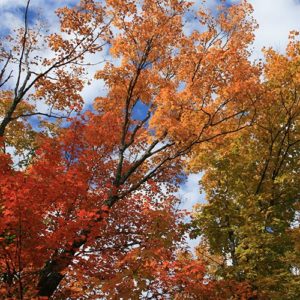
Fall is such an amazing time of year! Early in the fall, the fields and open areas are awash in a sea of bright yellow punctuated by deep purple, pink, or bright white. Later in the season, the fall asters become more dominant with their bright white, purple, and blue flowers. The forests and woods are also putting on an everchanging display of reds, yellows, and oranges.
This is a very active time of year for the animals too. Songbirds that we haven’t seen since last spring are appearing again. Some will only be here for a short time because this is just a stopover on their migration route. Others come here to overwinter, so we’ll get to enjoy them for several months. Salamanders, frogs, snakes, lizards, and many other critters are getting ready to go into their forms of winter hibernation.
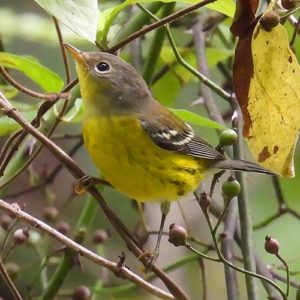
The insects are also getting in on the fall action. Our migratory butterflies and dragonflies are making their way south. Many of our non-migratory butterflies, dragonflies, and other insects are completing their final mating cycles for the year. The prodigies from those final matings will sometimes overwinter as eggs, other times they’ll overwinter as a caterpillar or other nymphal or larval form, and other times they’ll overwinter in a pupal form such as a chrysalis or cocoon. A few non-migratory insects, including next year’s bumble bee queens and some butterfly and moth species, even overwinter as adults.
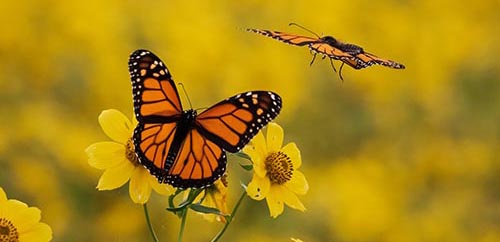
Fall really is my favorite time of year because there is so much going on in the natural world and so many fun things to observe. Not to mention, the oppressive heat and humidity of summer has broken which makes playing and working outside much more pleasant.
Traditionally fall is also a busy time for gardeners. Most of us have grown up hearing about and being taught about all the fall cleanup you need to do in the garden to ensure that everything remains healthy. Add all that fall cleanup to all the other seasonal activities that are often happening at this time of year, and it can be a little overwhelming.
But here’s some good news. When using native plants to garden for pollinators and wildlife, much of the traditional fall cleanup is not only unnecessary but could even be detrimental to your goals. And if you don’t have to do all that fall cleanup, then it gives you more time to kick back and enjoy the everchanging natural wonders around you. Plus, there is often an abundance of fall activities happening in the community and less time spent on fall cleanup could make it easier to participate in those activities too.
So, let’s talk about what you need to know and do when it comes to fall cleanup in the pollinator and wildlife gardens.
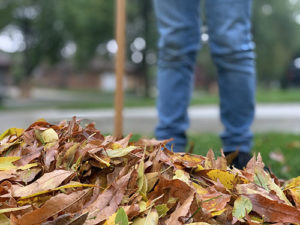
How did our traditional fall garden cleanup routines begin?
Many of our traditional fall cleanup routines for the garden come to us from the agricultural world. In that world, those fall cleanup routines make perfect sense because the farmer’s survival may depend on those crops – either directly as food for their family or indirectly as their family’s income source. So, any loss can be detrimental to the family on many levels.
For example, when growing agricultural crops, you are often growing relatively large patches of a single type of vegetable or grain. Obviously, anything that eats that vegetable or grain is going to be more attracted to larger patches of it than to smaller patches.
Also, because no other plant species are growing with it, the only insects and critters that will be attracted to that area are those that eat that vegetable or grain. And, if you grow the same crop in the same place year after year, then the pest population in that location is going to grow over time as the pest species lay more and more eggs in that vicinity.
The same thing is true for many diseases. Having a large number of the same plant species concentrated in a single location makes it easier for diseases to spread. Just like with the insect eggs, disease vectors can also build up over time if the same crop is grown in the same location year after year.
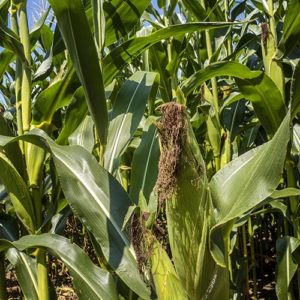
So, it makes sense from an agricultural perspective to do a fall cleanup. Removing any dead vegetation from the past growing season means that you are also removing any potential pests on that vegetation. If you remove them in the fall, then they don’t have a chance to emerge the following spring and damage your crop. Any diseases that may have been present on the old vegetation are also removed.
But just because something makes sense in the agricultural world, doesn’t mean that it makes sense in smaller garden settings that aren’t growing crops and have a very different purpose.
Why doesn’t the traditional fall cleanup make sense when gardening with native plants for pollinators and wildlife?
When gardening with native plants for pollinators and wildlife, the entire situation is different. You aren’t growing large plots of a single species. Instead, you have multiple species of plants growing close to each other. That means you are attracting a wide range of insects and other critters to the area.
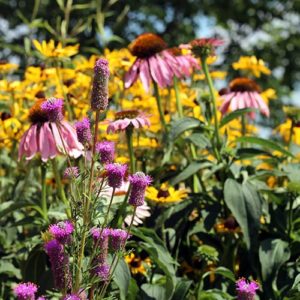
The wide range of insects and other critters means that you are likely to attract predators as well as prey, thus creating a more balanced ecosystem that keeps everything in check. The potential for disease build up isn’t going to be as big of an issue either because of all the diversity you are creating both in terms of the plants you are growing and the critters you are attracting.
Also, the idea of a pest species can be very misleading. No insect or animal is inherently bad or always a pest that should be removed and destroyed. Instead, the best definition of a pest is the same as the best definition of a weed. In reality, a pest is just an insect or other animal that is doing something that you don’t want it to do in that location.
For example, many agricultural pests are caterpillars that turn into butterflies and moths. Some of those butterflies and moths may be ones that we enjoy watching in our gardens and want to attract. In other cases, the caterpillars may serve as baby bird food which allows us to attract and enjoy more songbirds to our property. Or the adult moths may serve as bat food or whip-poor-will food.
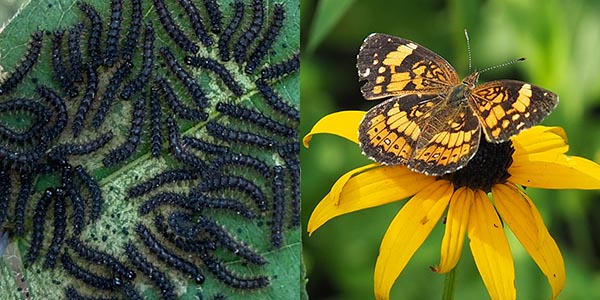
And because we’re not relying on the native plants for our survival or to feed our families, it’s ok if insects or other animals eat some of the plants. In fact, when we include host plants in our gardens, we are planting those species specifically to serve as food sources for the species that we want to attract.
Conducting the traditional fall cleanup in our native plant gardens that we are growing for pollinators and wildlife has a very different outcome than doing the same traditional fall cleanup in agricultural settings. In our native plant gardens, removing all the dead vegetation from the previous season doesn’t get rid of or help reduce potential pest species or diseases. Instead, it is removing the eggs, caterpillars, chrysalises, cocoons, and other immature insects that will become next year’s butterflies, moths, baby bird food, etc.
What should you do instead of the traditional fall garden cleanup?
If we’re just looking at the value for pollinators and wildlife, then the best fall cleanup routine is often to leave everything just as it is. Think about it, nobody goes around and does a fall cleanup in the woods, forests, and fields.
Let the leaves stay where they fall from the trees. The fallen leaves will provide overwintering locations for butterflies, moths, next year’s queen bumble bees, a variety of other insects, not to mention potentially salamanders, red bats, and a variety of other animals that aren’t insects. In addition, many of our favorite backyard songbirds like Carolina wrens will spend the winter picking through the leaves as they hunt for insects and other prey. Leaves are also Mother Nature’s mulch and can form a blanket of protection for tender young seeds or seedlings.
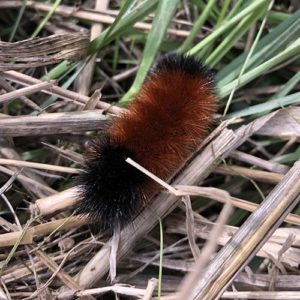
Allow the stems, seedheads, and other dead vegetation from earlier in the season to remain standing. The eggs for a variety of insects may be hidden on the dead vegetation, not to mention butterfly chrysalises that can look remarkably like crumpled, dead leaves. The pupae of other insects may be developing inside stem galls, and not all stem galls are as noticeable as the ones that we often find on goldenrods. Some of our native bees also lay their eggs inside the stems of plants where the next generation of bees will develop for an entire year before emerging the following spring.
That standing dead vegetation will also attract numerous birds. Some birds like sparrows and goldfinches will visit the seedheads throughout the winter to search for any remaining seeds. Other species of birds will search along the stems of the plants looking for insects or even drilling into galls to gobble down the pupa hidden inside. The standing dead vegetation can also serve as cover for the birds to hide in or take shelter in during inclement weather.
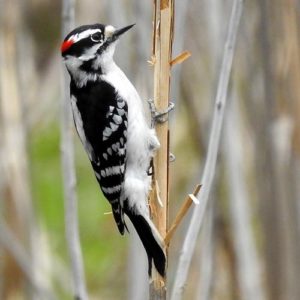
BUT, leaving everything alone like that is only taking into account the needs of the pollinators and wildlife. That doesn’t work when we’re talking about native plant gardens or pollinator gardens because we are talking about the gardens around our homes and in other places we frequent.
We are just as much a part of those environments as the pollinators and wildlife we are wanting to attract with our gardens. In fact, it could be argued that we are more a part of these environments than the pollinators and wildlife we are attracting. Therefore, it doesn’t make sense to just look at the needs of the pollinators and wildlife. We need to take our own needs and desires into the equation too. It’s about finding the right balance for everyone – us and the critters.
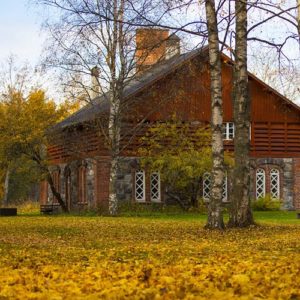
If you’ve followed Backyard Ecology for long at all, you know that finding the balance between your needs and those of the pollinators and wildlife you want to attract is very important to us. You also know that we recognize that everyone is going to have a different balancing point because we all have different circumstances and goals. So, let’s step back and look at some of the ways we can balance our needs and the needs of our pollinators and wildlife.
When it comes to leaving your leaves, I think we can all agree that removing the leaves from sidewalks, driveways, and similar hard surfaces is a good idea. Wet leaves on hard surfaces become slick so removing the leaves is a good idea for the safety of ourselves and those around us. Plus, those locations aren’t good places for pollinators and wildlife to be overwintering because there’s too much risk of them getting stepped on or run over.
Fall cleanup that includes removing leaves from those surfaces seems like a no-brainer to me. But that doesn’t mean you have to remove every leaf from your property either. It doesn’t have to be all or nothing. You can find an in-between or a balancing point and there are all kinds of different ways to do that. If you’re interested in more ideas for ways to do that, then you might enjoy this article I wrote awhile back on leaving your leaves.
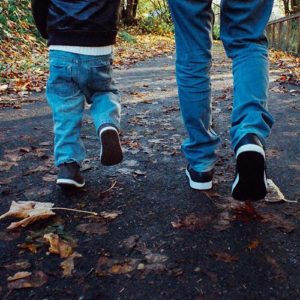
When it comes to standing dead vegetation, it’s ok to remove some of it if you need to. For example, if the vegetation starts to fall across the sidewalk or out into the driveway, then it might cause you or a loved one to get so aggravated that you declare native plants to be too messy and end up pulling them all out. Cutting back the offending vegetation that is falling into those high traffic areas or is causing the aggravation is ok.
If you can stack or pile the vegetation in another area, then many of the insects that might be on or in that vegetation will still emerge in the spring. Even if you can’t do that, then you are still providing habitat during other seasons and hopefully there are other areas of your yard where you can leave some standing dead vegetation to provide winter habitat.
If you enjoy working in your garden during the fall and are looking for something which can replace your traditional fall cleanup routine, then consider planting more native plants. We traditionally think of spring as the planting season, again because of the annual agricultural crops that are often grown. However, fall is the best time of year to plant native perennial wildflowers, trees, and shrubs. Switching your primary planting season from spring to fall will allow you to have stronger, more vigorous plants next year.
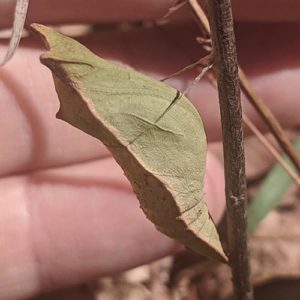
Summary
The traditional fall cleanup routine for our gardens was adapted from agricultural practices. That fall cleanup routine makes sense in an agricultural setting. However, it doesn’t make as much sense in our native plant gardens because our goals are different. Instead, the fall cleanup routine in our native plant gardens should be about doing less and letting things be unless we have a specific reason to remove something.
There are definitely times and situations, even in our native plant gardens, where pieces of the traditional fall cleanup routine make sense. It’s ok to act in those circumstances. It’s about finding the balance that works for you and your family. And doing less of the traditional fall cleanup routine, will give you more time to spend on other things like enjoying the beauty and activity associated with the fall season.
If you’re reading this in November 2023, do you have a few a minutes to help us by taking a quick survey? We’ll use this end-of-the-year survey to guide our plans for Backyard Ecology content and programs in 2024. This is your chance to tell us what topics you would like to hear more about and share any feedback you have with us.

Backyard Ecology: Exploring Nature in Your Backyard
Nature isn’t just “out there.” It’s all around us, including right outside our doors. Hi, my name is Shannon Trimboli, and I am the host of Backyard Ecology. I live in southcentral Kentucky and am a wildlife biologist, educator, author, beekeeper, and owner of a nursery specializing in plants for pollinators and wildlife conservation. I invite you to join me as we ignite our curiosity and natural wonder, explore our yards and communities, and improve our local pollinator and wildlife habitat. Learn more or subscribe to my email list at www.backyardecology.net.

Leave a Reply